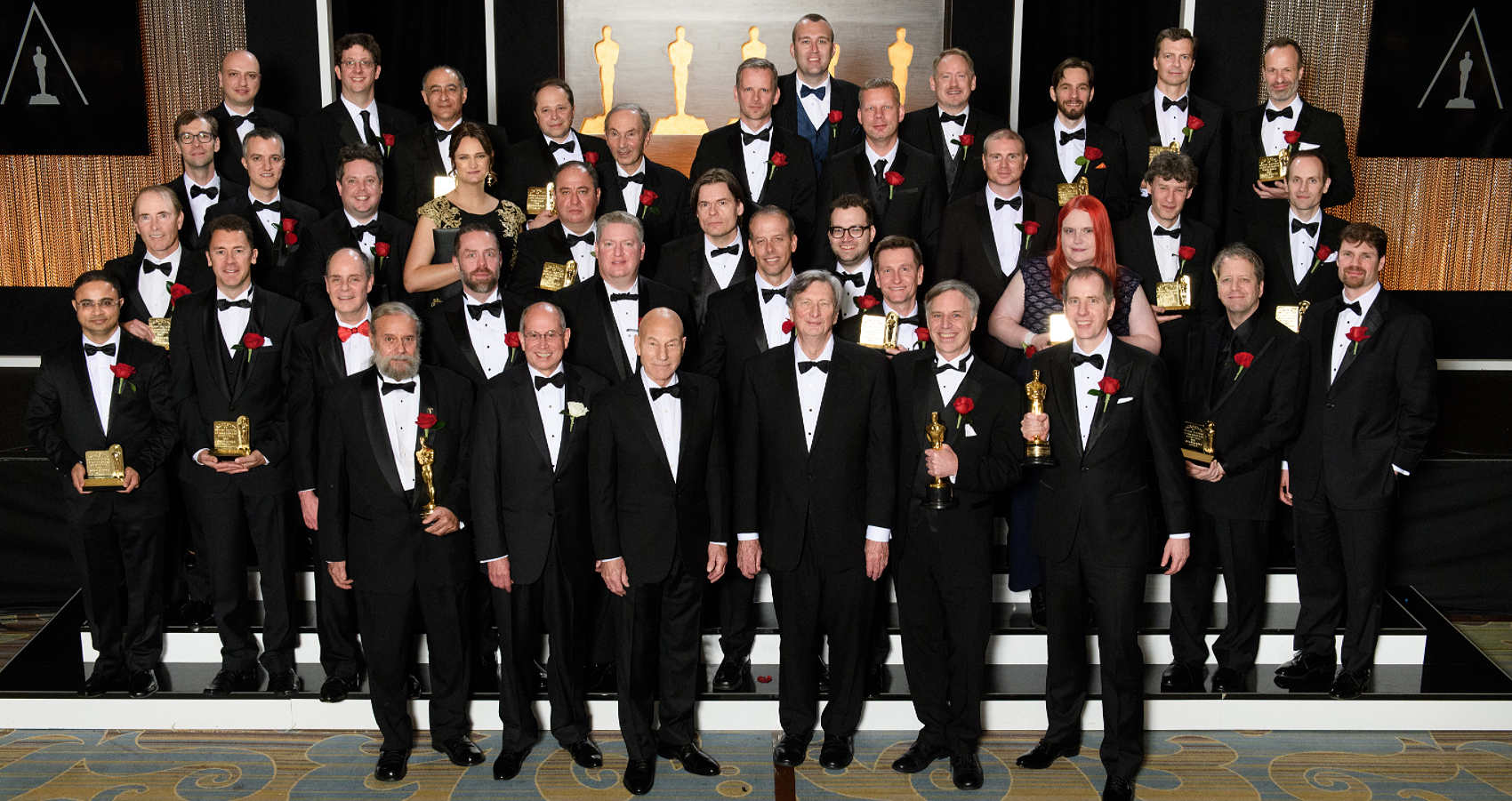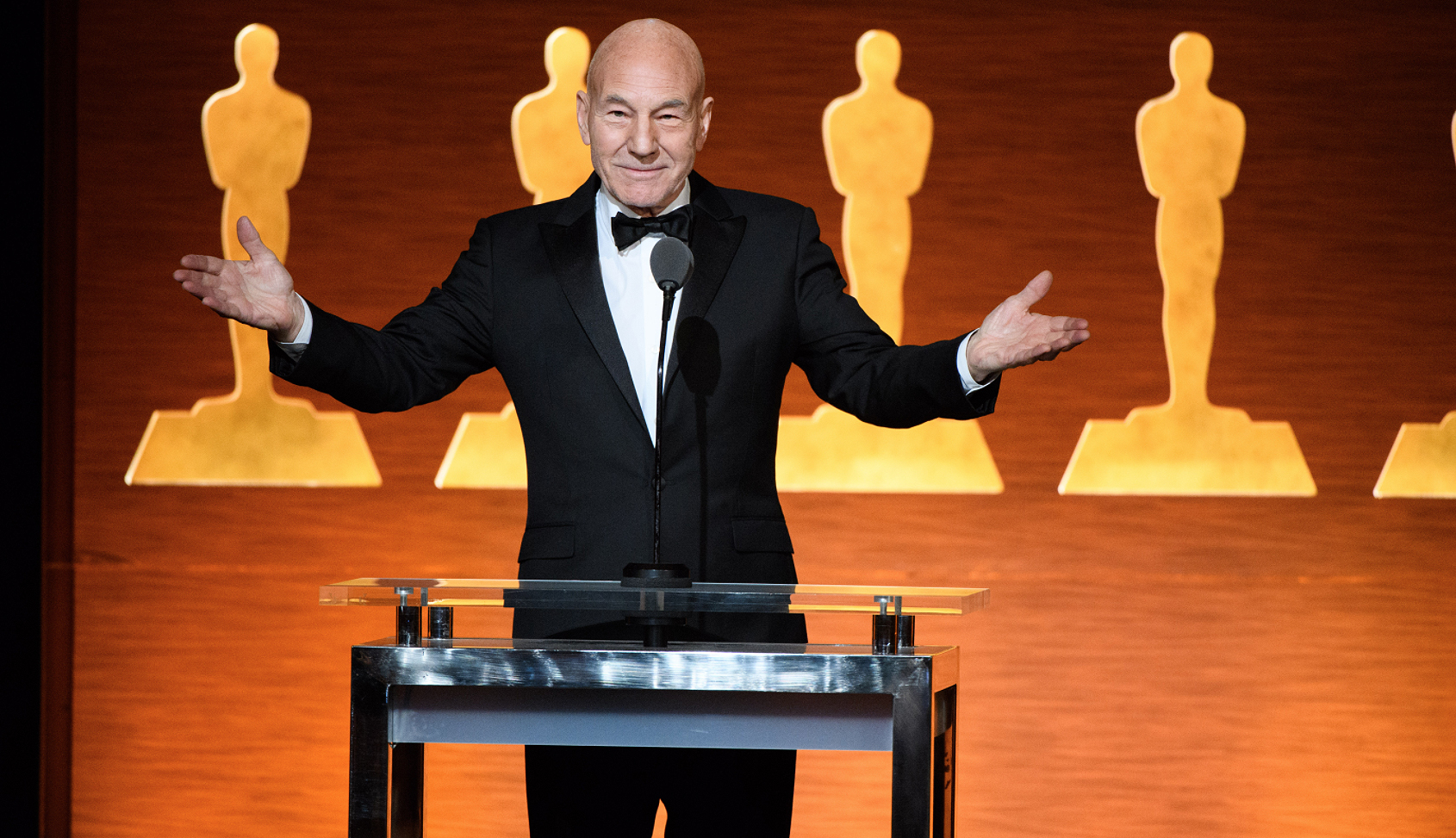
AMPAS Sci-Tech Awards Honor Erland and Other Cinema Scientists
“If you think there is a significant difference between the science side of cinema and the artistic side — let me hasten to assert there really is none,” noted Gordon E. Sawyer Award honoree and ASC associate Jonathan Erland.
“If you think there is a significant difference between the science side of cinema and the artistic side — let me hasten to assert there really is none,” noted Gordon E. Sawyer Award honoree and ASC associate member Jonathan Erland.
On Saturday, February 10, the grand ballroom of the Beverly Wilshire Four Seasons Hotel in Beverly Hills played host to some of the greatest minds in cinema for the 86th annual Academy of Motion Pictures Arts and Sciences Scientific and Technical Achievement Awards.
Although the first stand-alone Sci-Tech Awards were hosted on March 29, 1978, scientific and technical achievements have been part of the Academy Awards since 1931. And this year, 10 awards were presented to 34 individuals, as well as one organization, during the course of the evening hosted by Sir Patrick Stewart.

The event opened with comments from AMPAS president John Bailey, ASC, who noted that the first Sci-Tech Oscars were given to RKO Studios for noise-reduction recording — long before the days of Dolby — and to DuPont film and Eastman Kodak Company for the manufacture of “super-sensitive” panchromatic film:
The top prize of the evening, the coveted Gordon E. Sawyer Award, an Oscar statuette, was presented to ASC associate member and visual effects technologist Jonathan Erland, for his many technological contributions that have brought credit to the industry.
In the 86 years of the Sci-Tech Awards there have only been 26 recipients of the Gordon E. Sawyer Award.
Erland’s many accomplishments in the field of visual effects and the science of motion pictures have been acknowledged by the Academy numerous times, including his receipt of the John A. Bonner Medal of Commendation in 2012. From his work as a member of John Dykstra, ASC's visual effect crew on the original Star Wars (1977), to his creation of the reverse bluescreen traveling matte process and his study of high-speed emulsion stress syndrome, Erland has been a force in the advancement of cinema science for decades. He served on the Academy Board of Governors for 11 years and played a key role in establishing the Visual Effects Branch of the organization, in addition to being a co-founder of the Visual Effects Society (VES). Erland has also been instrumental in the Academy's development of the spectral similiarity index, a methodology for measuring the color fidelity of modern solid-state LED illuminants.
“I don't think that I could have known 34 years ago, when I joined this institution, just how significant it would become in my life,” Erland offered as he accepted his Oscar.
Six decades ago, Erland began his path to Hollywood as an actor. He studied at the Royal Central School alongside Judy Dench and Vanessa Redgrave, both of whom have won Academy Awards for their screen work. He noted, “I might have dreamed of this day when I began my career as an actor, but I certainly never dreamed I would get here quite this way! Over time, my career path swerved from in front of the camera to behind the camera... If you think there is a significant difference between the science side of cinema and the artistic side — let me hasten to assert there really is none. At least not as much as you might think. In cinema, art and science are bonded together. The same faculties of imagination, insight and keen observation and talent for problem solving are essential ingredients for performance in either case.”
Erland candidly lamented the current state of the Academy and its, mostly, award-centric focus: “Our Academy is not an edifice, though we have one and a very fine one at that. Nor is it an award show — though we have that, too, and a wonderful extravaganza it is. An ‘academy’ is, by definition, a body of academicians — that’s flesh and blood people, now more than 7,000 of us. An eclectic community of various perspectives, but imbued with a shared belief, ethos and mission to foster the pursuit of excellence in the art science that is cinema. Our early Academy accomplished a great deal because our forebearers were an academy. There was then essentially no administration or staff. There were, instead, communities — many of them — and they collectively transformed early cinema. Over time, the growing administration comprised of non-members displaced academicians in many functions and operations of the institution. The Academy became increasingly more award-centric and members largely relegated to an award-voting panel. However, this community is comprised of much of the best practitioners in the field of cinema. To waste the awesome potential of the resource is unconscionable. If we are to fulfill the dream that [Douglas] Fairbanks and [Mary] Pickford and the other [AMPAS] founders had for our art form, we must collectively assume more responsibility for our institution.”
Erland quoted the Academy’s second president, William C. de Mille, who, when pressed at a general meeting about the Academy’s focus on cinema science, said, “If we don't get the science first, there ain't gonna be no art!”
Erland closed his speech with a quote from Pickford: “The Academy is the League of Nations of the motion picture industry. It is our open forum where all branches can meet and discuss constructive solutions to problems with which each is confronted – and in the past we were never able to get together on a common ground. In making this possible, the Academy has conferred a great service that the producer, star, featured player, cinematographer — in fact, every individual — can come into the Academy with any problem or proposal and feel that all barriers are leveled; that in this open court, his voice carries the same weight as that of any other person regardless of position and standing. There is no greater force for coordination, no greater avenue for constructive and intelligent cooperation for advancement than that offered by the Academy of Motion Picture Arts and Sciences.”
ASC associate member Leonard Chapman of Chapman Leonard Studio Equipment and his team — Stanislav Gorbatov, David Gasparian and Souhail Issa — were awarded a Scientific and Engineering Award Plaque for the creation of the Hydrascope Telescoping camera crane. The Hydrascope is the first and only completely waterproof telescopic camera crane. It can be completely submerged in water and was designed for more than 10,000 hours of use in salt water. Chapman offered, “On a set, if it starts to rain, everyone has to cover the equipment. The Hydrascope is there, standing out in the rain, and it loves it! It looks even better in the rain.”
The crane requires minimal setup and has a large variety of sizes, lengths and bases. It can handle a payload of up to 250 lbs. of camera and lighting gear. The telescoping sections are made of anodized aluminum and the hydraulic solenoid valves are completely waterproof; their enclosures are pressurized with nitrogen gas to that even fully submerged, they remain totally dry.
“It's a true honor,” Chapman offered as he accepted the plaque with his team. “The concept for the Hydrascope came from the need to achieve shots in any environment. The robust design had inherent benefits, making it water proof and allowing it to capture shots from land, air or water — rain or shine. We’re always striving to provide filmmakers with more creative freedom to achieve the shots they envision.”
The first prototype Hydrascope was used on Harry Potter and the Goblet of Fire (2005), for an extensive underwater sequence, and the camera platform has now been used on more than 100 films.
The night also included two award upgrades. Previous Sci-Tech Certificates were presented to Houdini visual effects animation software and Nuke compositing software, but due to their lasting impact on the industry and sustained usage, both were upgraded to Plaques. Mark Elendt and SideFX Software were also presented with a Special Award of Merit, an Oscar statuette, for the creation of the Houdini visual effects software.
Here’s more detail on the complete recipients for the night:
TECHNICAL ACHIEVEMENT AWARDS (ACADEMY CERTIFICATES)
To Jason Smith and Jeff White for the original design, and to Rachel Rose and Mike Jutan for the architecture and engineering, of the BlockParty procedural rigging system at Industrial Light & Magic. BlockParty streamlines the rigging process through a comprehensive connection framework, a novel graphical user interface, and volumetric rig transfer, which has enabled ILM to build richly detailed and unique creatures while greatly improving artist productivity.
To Joe Mancewicz, Matt Derksen and Hans Rijpkema for the design, architecture and implementation of the Rhythm & Hues Construction Kit rigging system. This toolset provides a novel approach to character rigging that features topological independence, continuously editable rigs and deformation workflows with shape-preserving surface relaxation, enabling fifteen years of improvements to production efficiency and animation quality.
To Alex Powell for his contribution to the design and engineering, to Jason Reisig for his contribution to the interaction design, and to Martin Watt and Alex Wells for their contributions to the high-performance execution engine of the Premo character animation system at DreamWorks Animation. Premo’s speed and simplicity enable animators to pose full-resolution characters in representative shot context, significantly increasing their productivity.
To Rob Jensen for the foundational design and continued development, to Thomas Hahn for the animation toolset, and to George ElKoura, Adam Woodbury and Dirk Van Gelder for the high-performance execution engine of the Presto Animation System at Pixar Animation Studios. Presto allows artists to work interactively in scene context with full-resolution geometric models and sophisticated rig controls, and has significantly increased the productivity of character animators at Pixar.
SCIENTIFIC AND ENGINEERING AWARDS (ACADEMY PLAQUES)
To John Coyle, Brad Hurndell, Vikas Sathaye and Shane Buckham for the concept, design, engineering and implementation of the Shotover K1 Camera System. This innovative six-axis stabilized aerial camera mount, with its enhanced ability to frame shots while looking straight down, enables greater creative freedom while allowing pilots to fly more effectively and safely.
To Jeff Lait, Mark Tucker, Cristin Barghiel and John Lynch for their contributions to the design and architecture of the Houdini visual effects and animation system. Houdini’s dynamics framework and workflow management tools have helped it become the industry standard for bringing natural phenomena, destruction and other digital effects to the screen.
To Bill Spitzak and Jonathan Egstad for the visionary design, development and stewardship of the Nuke compositing system. Built for production at Digital Domain, Nuke has become a ubiquitous and flexible tool used across the motion picture industry, enabling novel and sophisticated workflows at an unprecedented scale.
To Abigail Brady, Jon Wadelton and Jerry Huxtable for their significant contributions to the architecture and extensibility of the Nuke compositing system. Expanded as a commercial product at The Foundry, Nuke is a comprehensive, versatile and stable system that has established itself as the backbone of compositing and image processing pipelines across the motion picture industry.
To Leonard Chapman for the overall concept, design and development, to Stanislav Gorbatov for the electronic system design, and to David Gasparian and Souhail Issa for the mechanical design and integration of the Hydrascope telescoping camera crane systems. With its fully waterproof construction, the Hydrascope has greatly advanced crane technology and versatility by enabling precise long-travel multi-axis camera movement in, out of and through fresh or salt water.
ACADEMY AWARD OF MERIT (OSCAR STATUETTE)
To Mark Elendt and SideFX Software for the creation and development of the Houdini visual effects and animation system. With more than twenty years of continual innovation, Houdini has delivered the power of procedural methods to visual effects artists, making it the industry standard for bringing natural phenomena, destruction and other digital effects to the screen.
You can find more videos from the 2018 Sci-Tech Awards here.






